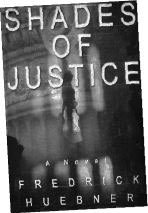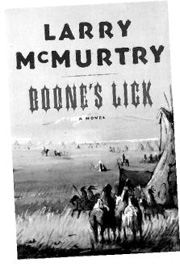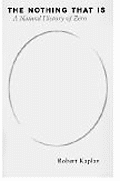JUST AS THE THREE spirits in Charles Dickens’ A Christmas Carol covered all stops on the time continuum—past, present, and future—so does modern crime fiction. The hunger for new story settings has given us mysteries rooted all the way back to the Cro-Magnon era and many centuries ahead of our own. However, the mere novelty of tales imagined in distant epochs doesn’t make them meritorious. Or memorable.
Two for Joy, the second novel (after One for Sorrow, 1999) featuring John, the resourceful Lord Chamberlain to sixth-century Roman emperor Justinian I, goes well beyond its singular backdrop to deliver a plot that is, well, byzantine. Things get off to a riveting start as a “stylite”—one of the many emaciated holy men who dwell atop prominent pillars in the city of Constantinople—is consumed by fire during a rainstorm. “Rivulets of flame ran greedily across the stylite’s robe,” write authors Mary Reed and Eric Mayer. “The burning man tried to dowse the blaze, slapping at his chest. He began screaming only when his matted hair burst into an incandescent halo around his head.”
Two for Joy by Mary Reed and Eric Mayer (Poisoned Pen Press, $23.95)
Set in Darkness by Ian Rankin (St. Martin’s Minotaur, $24.95)
Killing Time by Caleb Carr (Random House, $25.95)
After other stylites meet equally fiery fates, John seeks an earthly explanation for these “divine acts.” However, he’s distracted by an elderly pagan philosopher who abuses his patience, as well as by the querulous Justinian, who orders John to abridge the rising renown of a Christian prophet named Michael—an enigmatic figure with a thirst for power (fed by a growing multitude of acolytes) that threatens the peace in what remains of the Roman Empire. As more conflagrations savage Constantinople, a senator friend of John’s is slain and his son imprisoned, and the fetching but fearsome Empress Theodora begins to exercise control over the situation. The Lord Chamberlain must then unravel a series of mysteries that might secure his own welfare but will surely reveal a traitor within his circle of intimates.
With greater confidence than is expected of sophomore novelists, Reed and Mayer offer here not only an engrossing story line, but a rich study of a time and place that never reads like a history lesson. Their ancient Constantinople seems at once familiar—filled like our own cities with mendacious ladder-climbers, ruthless businesspeople, and the overlooked poor—and abundant in foreign intrigues. Hired killers lurk in shadowy alleys. Followers of the Persian bull god Mithra celebrate bloody rites in secret, underground temples. Eccentric characters challenge each other for the reader’s attention—none quirkier than John, a practicing pagan in charge of a Christian court and likely fiction’s only sleuthing eunuch, having been involuntarily castrated during his travels as a young bull-ring acrobat. Three cheers for Two for Joy. Who’d have thought you could have such a ball hanging around with a guy who has none?
THAT SAME DESCRIPTION doesn’t apply to another John—John Rebus, the ballsy modern-day Edinburgh police inspector who has starred in 11 novels by Scottish author Ian Rankin. Antisocial, untrusting, stubborn, heavy-drinking, Rebus is more like a pulp fiction-era private eye than the usual protagonist in police procedurals. Yet his gloomy-edged escapades have been bestsellers in the United Kingdom for years and have recently become hot properties on this side of the Atlantic. Black and Blue (1997), which won the British Crime Writers Association’s prestigious Gold Dagger Award, is among the few distinctive serial-killer yarns in print, and last year’s Dead Souls, in which Rebus hounded (alternately) a pedophile and a murderer, was almost as estimable. Although the new Set in Darkness is rather more orthodox in its plotting and less surprising in its resolution, it’s still an impressive introduction to Rankin’s oeuvre.
Like other Rebus books, this one opens with a puzzle from the past: A corpse is found hidden behind a fireplace in one of the buildings scheduled to be integrated into Edinburgh’s new Scottish Parliament complex. The body appears to have been deposited two decades before, back when the Scots last tried (but failed) to win independence. Sniffing about for clues, Rebus comes to suspect this old crime may be connected to the recent bludgeoning death of Roddy Grieve, a Labor Party candidate from a high-profile family who’d been a shoe-in for a seat in the new Parliament. Meanwhile, Rebus’ former partner and prot駩, Detective Sergeant Siobhan Clarke, is driving home one evening when she sees a homeless man take a suicide leap from a bridge. Following up, she discovers that the tramp was anything but destitute—in fact, he had a small fortune. He’d also been going by the same name as that of the man whose remains were concealed behind the fireplace. As complications tumble upon coincidences, Rebus exposes a real-estate conspiracy, confronts a toadyish cop who’s become obsessed with DS Clarke, is seduced by a femme fatale-like former model, and faces off against a gangster he thought was safely behind bars.
Rankin has said he was “appalled” to find his Rebus debut Knots & Crosses (1987) shelved under crime fiction—he thought he was penning mainstream literature. Set in Darkness, like its predecessors, is less a linear whodunit than a study of moral choices and their implications, heavy on character, light on violent episodes. A rewarding read by any standard.
FAR LESS SATISFYING, unfortunately, is Killing Time—the third novel by historical-thriller writer Caleb Carr (The Alienist, 1994), but his first to meld mystery with science fiction. While that combination has produced some interesting earlier works, including Alfred Bester’s The Demolished Man (1953) and Paul Johnston’s Body Politic (1999), Carr’s cautionary suspense novel of the future reads like a paranoid adult’s recrafting of a boy’s space opera.
Set in the year 2023, Killing Time posits a polluted world where wars are fought over dwindling natural resources. Corporations control governments and information technology has become as much a crutch as a creative tool, used to shovel news and rumors at a public no longer able to distinguish between the two. Although he’s nostalgic for life before the Web boom, psychiatrist and criminal profiler Dr. Gideon Wolfe has made the most of his circumstances, earning a handsome wage by educating prison guards—a real growth industry, ever since the adoption of “mandatory drug and quality-of-life punishments so stringent that fully two percent of [America’s] population was behind bars.” However, his complacency is disrupted when the wife of a murdered special-effects expert comes to him with evidence showing how details of a presidential assassination were falsified. Wolfe’s efforts to confirm this manipulation lead to his best friend’s demise—and the psychiatrist’s “abduction” aboard a super-advanced airship piloted by scientists and military experts hoping to spread enough fantastical misinformation to convince the world that it should better regulate technology.
Initially, Wolfe finds it heady to ride above the clouds in a craft that resembles, at least spiritually, Jules Verne’s Nautilus (right down to its being captained by a righteous genius, Malcolm Tressalian). He enjoys both the intellectual camaraderie of other crew members and the warmer attentions of Tressalian’s curvaceous sister, choosing to ignore hints of troubles to come. But when the ship is called upon to stop a terrorist bent on revenge against Russians he has been deluded into believing were responsible for the Holocaust, Wolfe realizes he’s merely exchanged one dubious existence for another. And there may be no turning back. This is neither a great revelation nor an unanticipated one, and only confirms the shallowness of Carr’s vision for his novel. Better that in the future he stick to tales of the past.








